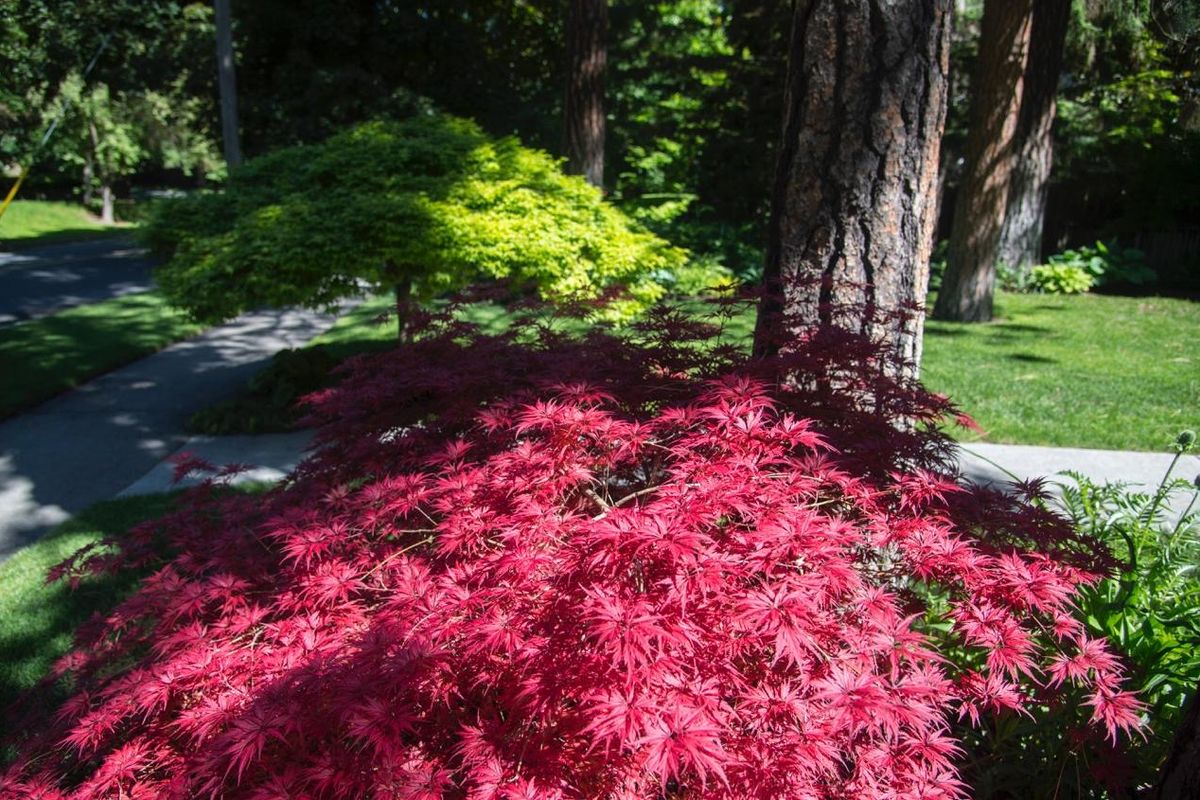In the garden: Shade makes for a cool garden

We gardeners often want what we don’t have: If our gardens are sunny, we long for shady retreats. Conversely, those who have shady yards yearn for sunshine. While some might feel a sunny garden is more visually appealing, a shade garden can be just as delightful and welcoming.
Merilee Dinneen has found that to be the case with her South Hill garden. Surrounded by tall pines, maples and other shade-producing trees, she has learned how to embrace those conditions.
“A shade garden is – literally – a cooler thing,” she said. “The shade makes it more comfortable outside and all of the colors of the plants look brighter in the shade.”
Dinneen is a Spokane County emeritus Master Gardener, having volunteered for an impressive 25 years. Gardening is an important aspect of her life.
“There’s just something about growing things and getting your fingernails dirty,” she said. “I love creating and seeing something come of it. Gardening is nature and it’s beauty.”
She has lived in her home for 30 years and has noticed just how large the surrounding tree canopy has become.
“The amount of sun we used to have in our yard is lost,” she said. “That kind of forced me into shade gardening. You might think you could create some sunny areas by chopping down some trees, but there are still the neighboring trees and street trees that are so tall.”
Even so, her back garden receives morning sunlight which lights up the plantings in addition to creating a pleasing dappled effect in the shadier areas. On her back patio, Dinneen has a small splashing water feature. She finds it adds a cooling effect and dampens a bit of the neighborhood noise.
Structure in the garden is provided by a tricolor beech, dogwood, an intoxicatingly fragrant Burkwood viburnum, yews, Japanese maples and Hinoki cypress.
Some of the midsized plants include boxwood, lady ferns, shade grasses, astilbe, Oregon grape, ligularia, bleeding heart, goatsbeard and cranesbill.
Those are joined by lower-growing plants such as heuchera (coral bells), hosta and wild ginger.
Dinneen’s favorite ornamental grasses are Bowles Golden sedge, Black Mondo grass, Japanese bloodgrass and Japanese forest grass.
Choosing plants for her conditions has been a learning process.
“You just try what you know should work,” she suggested. “If a plant is troublesome in my garden, I give it two tries in different spots, and if it doesn’t work, it’s out.”
Of all the potential plants for a shade garden, her absolute favorites are hostas and heucheras.
“I don’t know what I’d do without them – they’re my go-to plants,” Dinneen said. “There’s just so much variety, you could plant a whole bunch of those and have a completely different garden.”
While hostas have attractive flower spikes, it’s the leaf colors and textures that gardeners find most desirable. Just a sampling of interesting cultivars includes Afterglow, Blue Angel, Bridal Falls, Curly Fries, Paradigm, Rainbow’s End and Spilt Milk.
For those unfamiliar with heucheras, plant breeders continue to develop stunning varieties of this perennial so prized for its diverse foliage colors. Some particularly appealing cultivars are Amber Waves, Berry Smoothie, Lime Rickey, Southern Comfort and Sweet Tea.
Throughout Dinneen’s back garden, she has created small vignettes appealing to the eye. Some include containers.
“Sometimes I plant the pots, but often they look pretty just the way they are,” she said. “While pots can be colorful, some have a textured surface that adds a lot of interest.”
When she does plant a pot, she chooses shade-tolerant annuals such as fuchsias, impatiens or begonias.
Other than selecting plants that will do best in her garden and adapting to the tree canopy surrounding her yard, Dinneen has a frustrating challenge:
“Slugs are a problem for me,” she admitted. “Because there’s a lot of moisture in my yard, there are a lot of slugs. I use pelleted slug bait to control them.”
The main thing Dinneen has learned about shade gardening is being flexible.
“As your garden changes, you have to adapt to what’s going on,” she advised. “If your neighbor cuts down their tree, suddenly you have a problem. You have to think about how to deal with it and turn it into an opportunity.”
Susan Mulvihill is co-author, with Pat Munts, of “Northwest Gardener’s Handbook.” Contact her at Susan@susansinthegarden.com. To view this week’s “Everyone Can Grow A Garden” video, go to youtube.com/c/susansinthegarden.